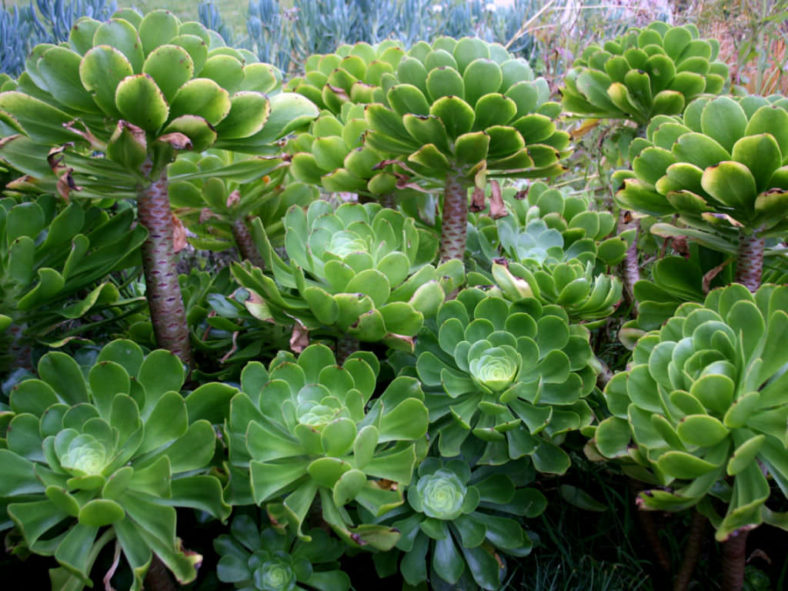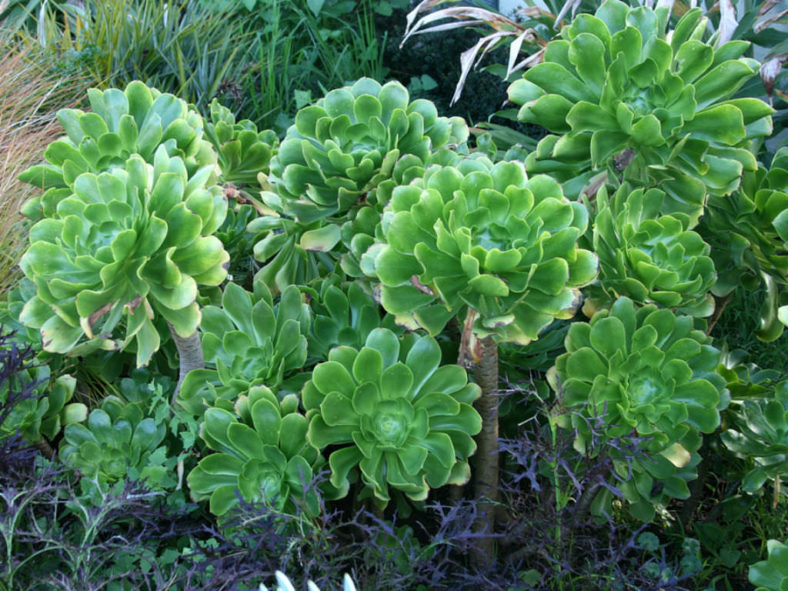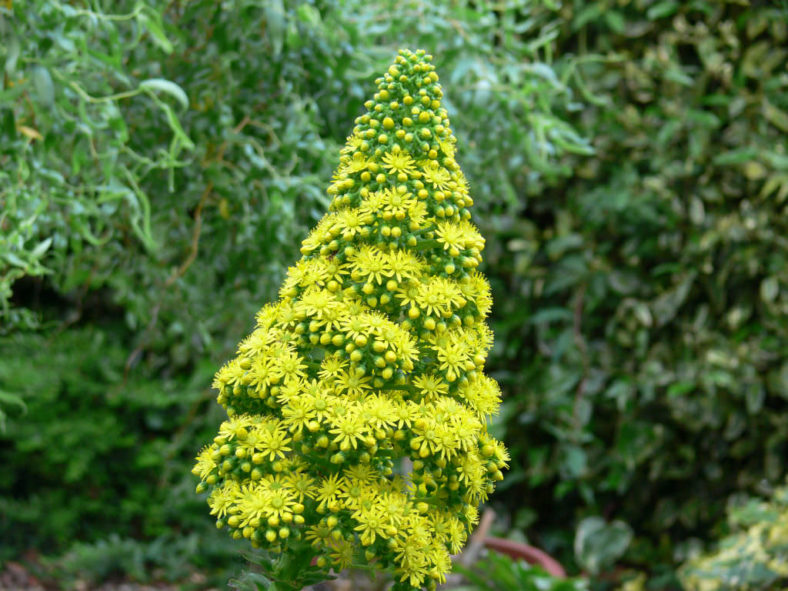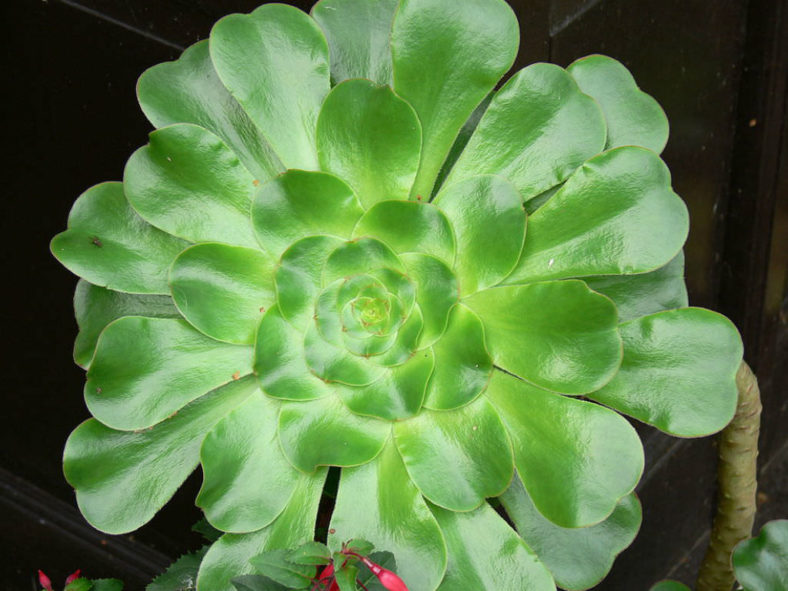Scientific Name
Aeonium undulatum Webb & Berthel.
Common Name(s)
Saucer Plant, Stalked Aeonium
Synonym(s)
Aeonium youngianum, Sempervivum undulatum, Sempervivum yongianum, Sempervivum youngianum
Scientific Classification
Family: Crassulaceae
Subfamily: Sempervivoideae
Tribe: Aeonieae
Genus: Aeonium
Origin
Aeonium undulatum is native to the Canary Islands (Gran Canaria). It grows on rocky outcrops or north-facing slopes, often in the laurel or pine forests at elevations that range from 980 to 4,920 feet (300 to 1,500 m).
Description
Aeonium undulatum is a succulent plant with spoon-shaped leaves arranged in large rosettes at the end of stout stems. It can grow over 6.6 feet (2 m) tall, often unbranched or basally few-branched, and it is one of the tallest species of the genus. The leaves can measure up to 7.2 inches (18 cm) long and 2 inches (5 cm) wide. They are dark green, often reddish along the margins and near the apex.
The flowers are yellow, star-shaped, 9- to 12-merous, and appear in a large conical cluster on a peduncle up to 8 inches (20 cm) long. The flower clusters can reach up to 20 inches (50 cm) in height and up to 16 inches (40 cm) in diameter. The plant is monocarpic, so the flowering stem will die when it flowers, usually after about five years.

Hardiness
USDA hardiness zones 10a to 11b: from 30 °F (−1.1 °C) to 50 °F (+10 °C).
How to Grow and Care
Aeoniums do not like hot or dry weather. In summer, they may go dormant and do not require any water except in arid conditions. In extreme heat, their leaves will curl to prevent excessive water loss. Growing them in moist shade will keep them growing, but their true growth season is winter to spring when temperatures are cool, 65 to 75 °F (18 to 24 °C), and damp. In the winter, water whenever the soil has dried out. Test by poking your finger into the soil an inch or 2 (2.5 to 5 cm). Too much moisture or allowing them to sit in wet soil will cause root rot.
A sandy loam or regular potting mix is better than a mix specifically for cacti and succulents since Aeoniums need some moisture. If you grow them in containers, repot them with fresh potting soil every 2 to 3 years.
Feed during the growing season with a half-strength balanced fertilizer every month or so. Do not feed while dormant.
See more at How to Grow and Care for Aeonium.
Hybrids
Links
- Back to genus Aeonium
- Succupedia: Browse succulents by Scientific Name, Common Name, Genus, Family, USDA Hardiness Zone, Origin, or cacti by Genus
Photo Gallery
Click on a photo to see a larger version.



